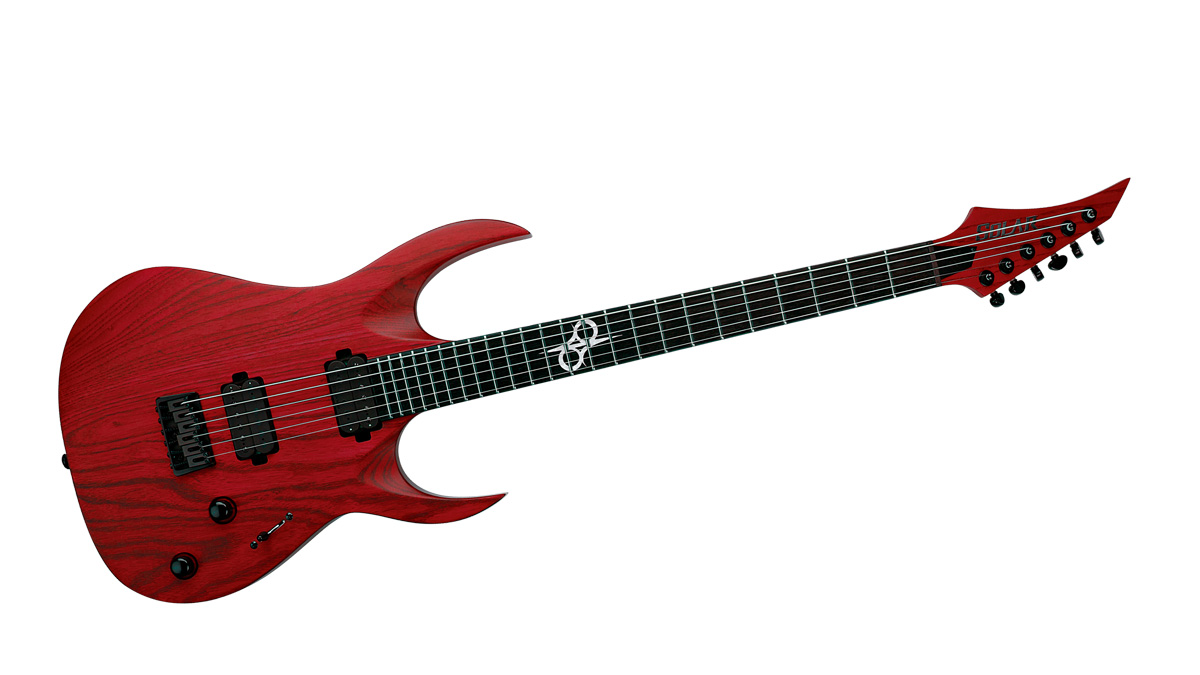MusicRadar Verdict
Given it's one of the most affordable offerings in the Solar Guitars range, we'd say Ola Englund may have just changed the metal guitar game: the A2.6 is near-impossible to fault.
Pros
- +
Effortless, speedy playability. Defined metal tones. Rock-solid tuning. Great price. Coil-splits make is surprisingly versatile.
Cons
- -
You'll need to be careful around that razor-sharp headstock!
MusicRadar's got your back
No one should be surprised when they take the Solar A2.6 out of the case.
Sure, you might gasp at how anyone could make a hot-rodded S-style electric look like the sort of lethal weapon you wouldn’t be allowed in the venue with, far less play a show with, but this is exactly the sort of design Ola Englund has had on his mind long before announcing his new company, Solar Guitars, in November last year.
As guitarist with The Haunted and Six Feet Under, extreme metal is his bread and butter, and that in turn demands an extreme instrument. With its sharp cutaways, ergonomic contours, and a headstock that you could hunt boar with, it looks the part - and anyone who is familiar with Englund’s signature Washburn PX Solar series will recognise the silhouette.
The A2.6 has a solid swamp ash body with a maple neck and ebony fretboard. The neck-through construction makes the neck a part of the body and vice versa. There are no clunky parts; the heel, such as it is, is rounded out into oblivion. Similarly, the neck is whittled down into a profile reminiscent of Ibanez’s slimmest Wizard necks.
The hardtail bridge is as unobtrusive and stable as they come, and it’s good to see a set of 18:1 Grover tuners. But then, nothing here is out of whack - the A2.6 feels like it was precision-engineered by folks who spent their downtime on their Ivy League STEM majors learning to play Perpetual Burn. On this, such Herculean feats of shred suddenly become possible.
The hardtail bridge is as unobtrusive and stable as they come, and it’s good to see a set of 18:1 Grover tuners
A pair of Duncan Solar humbuckers are seated in the neck and bridge positions, with a five-way blade selector to switch between them. In positions two and four, the ’bucker’s signals are split. This, allied to a tone pot with plenty of torque, gives the A2.6 a wide range of tones. Englund’s core demographic might not wish to hear about the dynamic and bouncy cleans when mixing the pickups, or that the A2.6 performs well through a glacially clean amp with a little modulation thrown in (think Metallica, et al); it’s the bright but gutsy metal tones they’re after and they’ll find plenty of combustible chug here.
Harmonics are easily teased from the A2.6, and on the bridge pickup especially you’ll find it hard to resist peppering your every riff or lead with a pinched squeal. That might upset bandmates and nearby dogs, but then Solar can’t be held responsible for your lack of discipline. They can, however, be held responsible for making you play that little bit better. No question, the A2.6 will flatter players of all abilities; it will enable them. And what else could you want from your guitar?
Jonathan Horsley has been writing about guitars and guitar culture since 2005, playing them since 1990, and regularly contributes to MusicRadar, Total Guitar and Guitar World. He uses Jazz III nylon picks, 10s during the week, 9s at the weekend, and shamefully still struggles with rhythm figure one of Van Halen’s Panama.
“The last thing Billy and I wanted to do was retread and say, ‘Hey, let’s do another Rebel Yell.’ We’ve already done that”: Guitar hero Steve Stevens lifts the lid on the new Billy Idol album
"This $399 item will incur over $578 in additional import charges": Price of Sonicware CyDrums drum machine more than doubles thanks to Trump tariffs
“For guitarists who crave an unrelenting, aggressive tone that stands out in any mix”: The Fortin Meshuggah head is the amp every metal player wants – now you can get its crushing tones in a pedal











